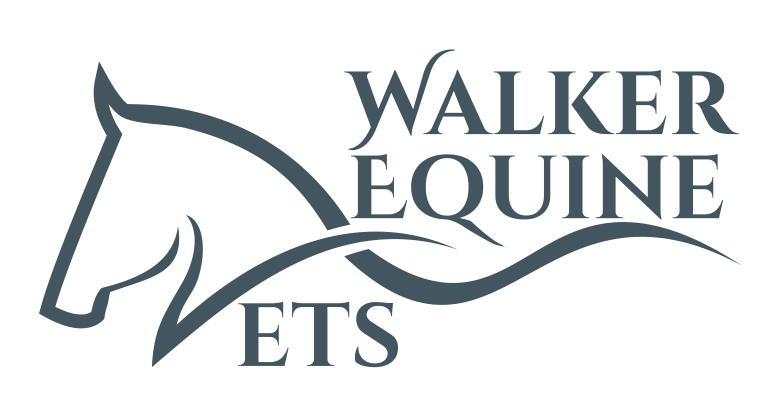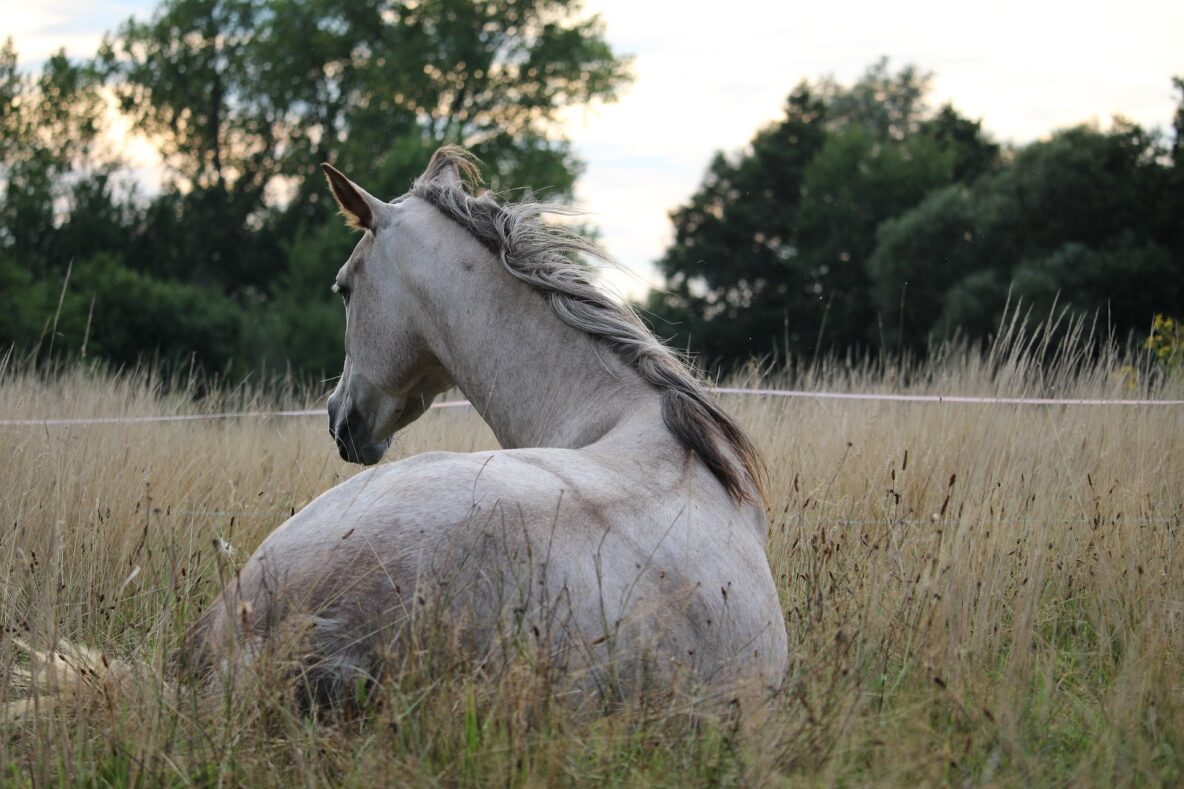LAMINITIS
Laminitis is a common condition of the feet, also sometimes referred to as “founder”. It causes varying degrees of foot pain, from the marginal discomfort of the slightly ‘pottery’ pony to severe life-threatening lameness. Some very low grade cases can go undetected with the affected animal simply being a bit foot sore after shoeing or not liking hard ground when exercised. Severe and uncontrolled cases require euthanasia on the humane grounds of incurable suffering.
Laminitis involves inflammation of the sensitive tissues (laminae) of the foot which disrupts their structure, therefore causing pain.
Very mild cases can be treated successfully with no lasting effects. If the inflammation is more severe and progressive, the sensitive laminae may lose their blood supply and die with consequent loss of support between the pedal bone and horny hoof wall. This can result in separation of the pedal bone from the hoof wall with rotation and/or sinking of the bone within the hoof capsule. As the horse stands and moves on its feet, penetration of the sole by the tip of the pedal bone is possible, usually with fatal consequences.
Even in chronic cases which seem to be under control, a gradual rotation of the pedal bone can cause irreparable damage to the coffin bone with increasing levels of pain and distortion of the hoof.
Which horses/ponies get laminitis?
Any! This is not just a spring condition of overweight ponies.
Although traditionally laminitis is considered a condition of overweight ponies, it is by no means exclusive to this group.
Some conditions can increase the risk of laminitis:
- Laminitis is often exacerbated by underlying endocrine disorders, equine metabolic syndrome (EMS) and Cushings syndrome (pars pituitary intermedia dysfunction / PPID).
- Overfeeding causing obesity.
- A large one-off intake of feed containing high sugar / carbohydrate content can cause laminitis.
- Toxaemia associated with colic and infections, especially bowel infections or severe pneumonia.
- Adverse reactions to certain drugs including corticosteroids.
- Severe injury, e.g. fracture or joint infection that results in overloading of the opposite limb.
- Neglected feet or very poor trimming and shoeing.
- Over-indulging in fresh grass.
- Stress
Horses or ponies with a history of laminitis are susceptible to recurrence. Many horses horses that have chronic or recurrent laminitis, have underlying EMS or Cushings (see our information on Cushings and EMS). Failure to address the underlying problem will result in failure to control the laminitis.
In the acute form you will typically notice:
-
- In mild cases, the horse or pony may appear slightly ‘pottery’. The forelimbs are most commonly affected although it is possible for the hind limbs only, or all four feet to be involved. Often one foot is worse than the others.
- The horse/pony is reluctant to move forward and may appear stiff.
- Unwilling to walk on hard uneven surface, or turn in tight circles.
- Heat in the feet with a bounding pulse which you feel above the heel bulbs or either side of the fetlock.
- Laminitic horses will often stand with the hind limbs well under the body and forelimbs stretched out in front, in an effort to keep weight off the painful front feet. This characteristic stance is almost diagnostic of laminitis.
- They may lie down for long periods or may constantly lift their feet alternately off the ground.
- More severe cases result in sudden inability or reluctance to move at all and horses with severe rotation and sinking will often be unable to bear any weight on the affected limb or limbs and will lie down.
In the chronic form:
-
- Milder forms of the above signs.
- Seen in horses/ponies that have recovered from an acute episode of laminitis. They have an altered hoof shape with long heels, divergent hoof rings being apparent at the heels compared to the toe region and a convex rather than concave sole.
- Often have rings around the hoof.
These horses must be monitored very closely for signs of foot pain and require regular remedial farriery.
They may need to be monitored by x-raying the hooves to assess any damage to the pedal bone and separation of the hoof wall from the underlying bone. This will assist the farrier in trimming the feet correctly.
It is important to realise that laminitis can progress from mild to severe even if early treatment is instigated. Early warning signs must be heeded and action take immediately.
What to do if I suspect Laminitis?
It is important you contact your vet immediately, your horse/pony will have a much better chance of recovering if it is treated promptly.
- Make your horse/pony comfortable by getting it to a stable immediately with a deep bed of shavings to provide support to the feet.
- You should give the pony water and only a small amount of hay until diet is discussed with your vet.
- If the horse/pony prefers to lie down in its new deep bed this should not be discouraged as it will take the pressure off its feet.
When the vet arrives, they will assess your horse/pony and decide if this is an acute or chronic episode and also if it is mild, moderate or severe.
- A period of box rest will be mandatory to minimise the chances of the disruption to the sensitive tissues of the foot leading to movement of the pedal bone.
- A course of pain relief along with some changes in diet will be prescribed to your animal. This is of a crucial importance.
- Specific consideration for specific scenario:
In cases of chronic pedal bone rotation, progressive skilled remedial trimming monitored by x-rays to shorten the toe and lower the heel will help to gradually return the hoof to a more comfortable conformation in relation to the pedal bone.
In horses where there is more severe or acute rotation or sinking of the pedal bone, radical trimming and shoeing with a wedge may be needed.
In very severe or intractable cases, this may be combined with surgery to cut the deep flexor tendon in an attempt to prevent further rotation.
In cases where the pedal bone has penetrated the sole, the prognosis is sadly hopeless and euthanasia should be performed on humane grounds.
How can it be prevented?
As with everything prevention is better than cure. Permanent changes to your daily management will help minimise the risk of an acute episode of laminitis or recurrence of another episode.
- A diet with minimal carbohydrates whilst still providing a balanced nutrition.
- Sudden increases in concentrate food intake should be avoided .
- When grass growth is lush, grazing should be restricted by either stabling or using electric fencing to ‘strip graze’ a paddock so there is only access to a small strip of grass at any one time.
- Grazing muzzle to restrict access to grass even when turned out. These usually have small holes in so that the horse or pony can eat a little but has to work harder to achieve this.
- Restrict the amount of exercise you do on hard surfaces.
- Strict attention to routine foot care.
- Regularly use a weigh tape to monitor trends in your horse’s/pony’s weight.
- Do not ignore illnesses associated with infections, especially colic and diarrhoea (colitis) or uterine infections (metritis) following retained placenta. These infections greatly increase the risk and veterinary help should be sought without delay.
KEY POINT: Laminitis can present with mild signs to a life-threatening condition and should never be treated lightly. Even mild cases can take many months to improve and some horses never regain full soundness. Acute episodes associated with toxaemia are a real challenge for the vet, even if high quality intensive care is in place.
Prevention is much better than cure. Good management, including regular skilled farriery and dietary control, needs to be implemented. This is especially important in those breeds prone to obesity.

